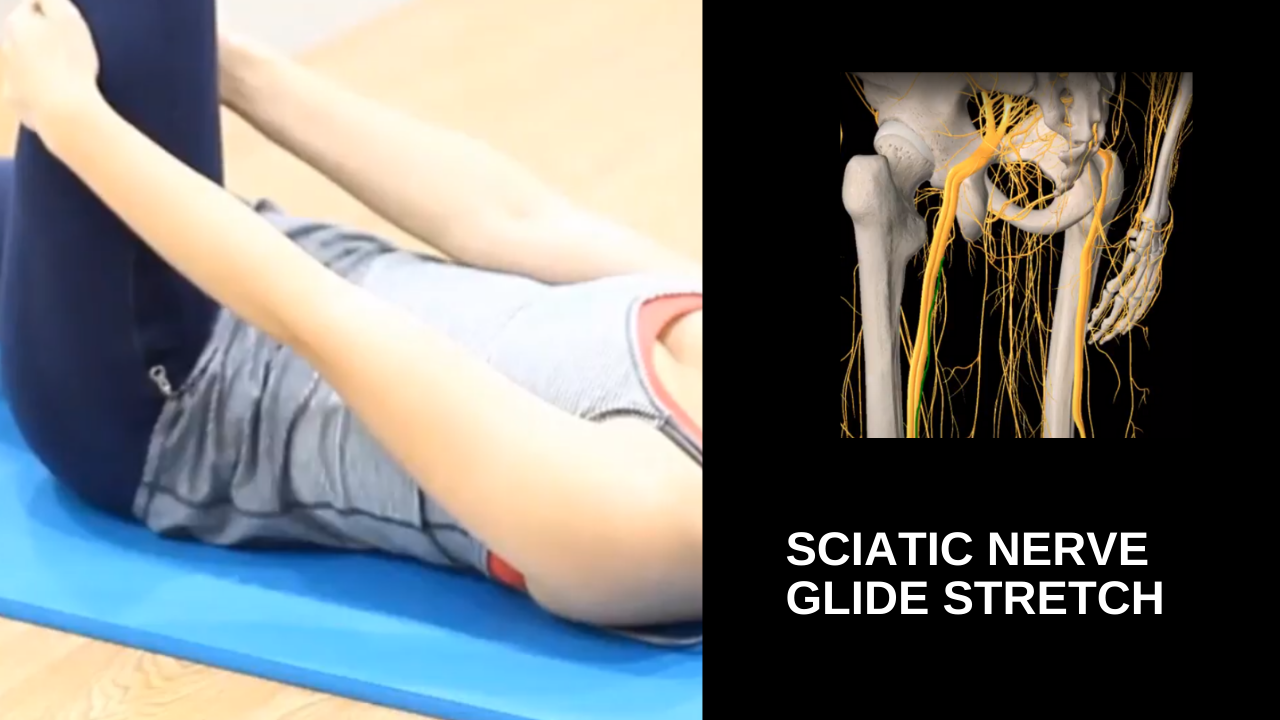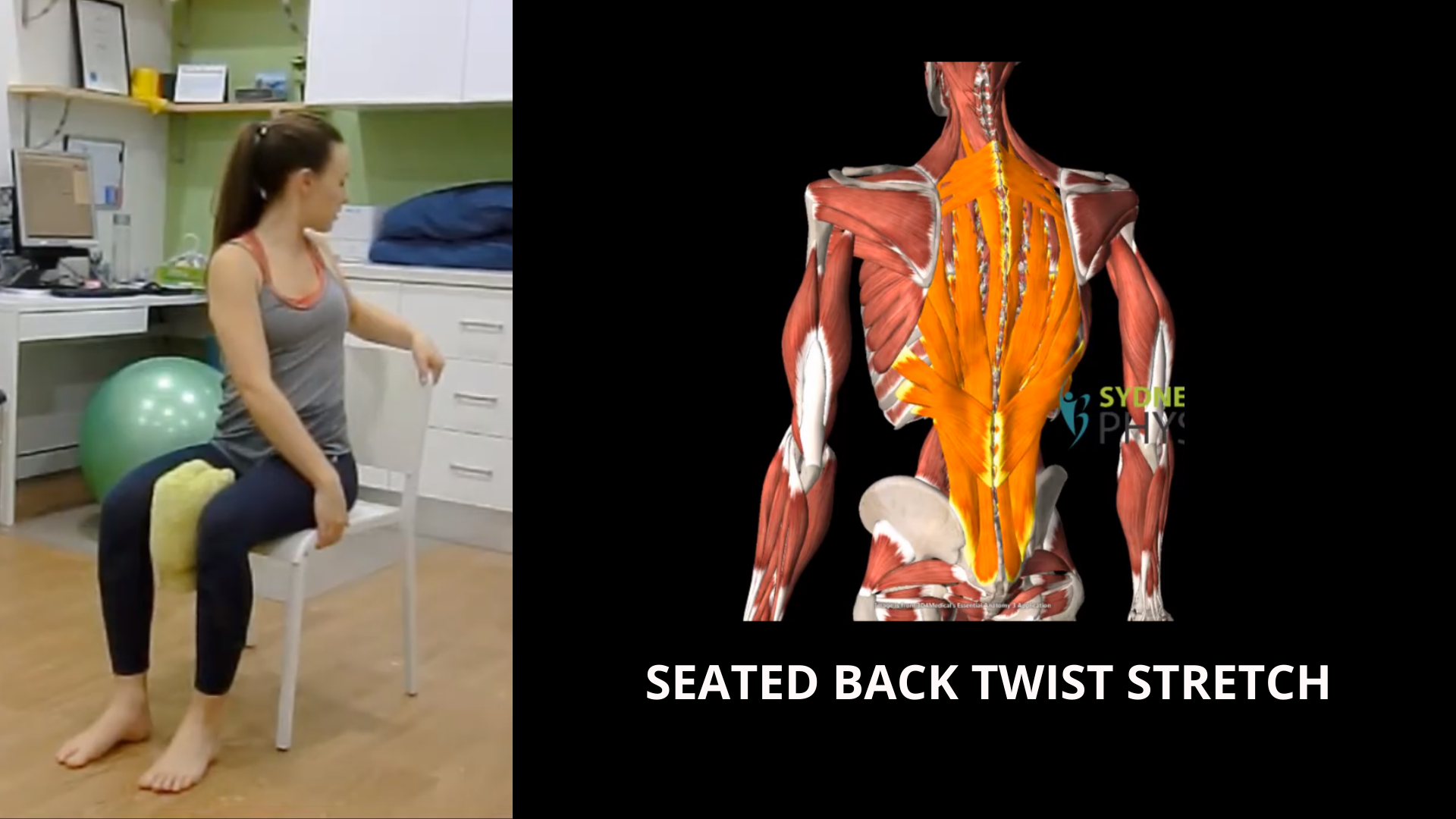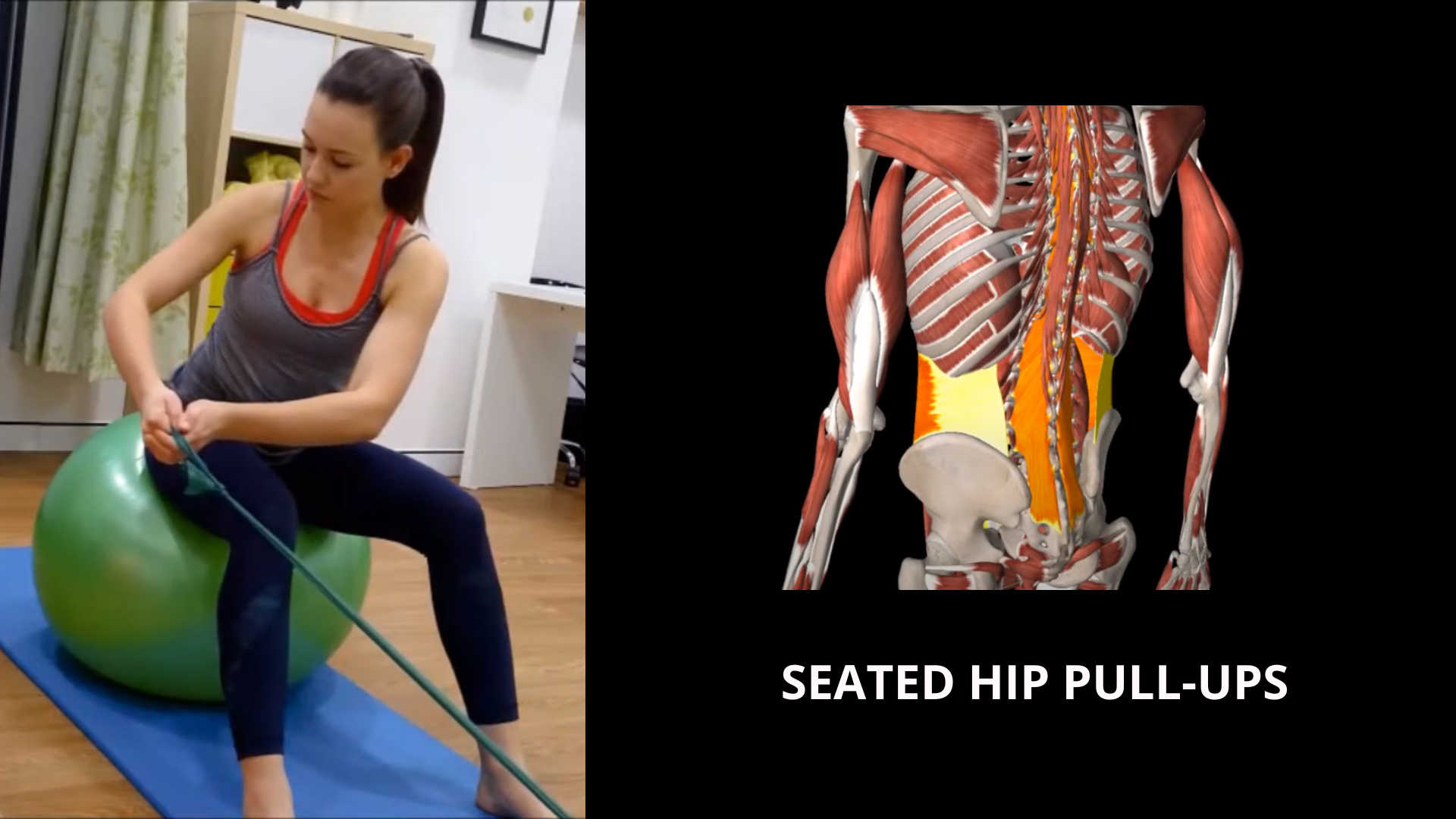Sciatic nerve glide stretch
The lying sciatic nerve glide stretch helps relieve tension along the sciatic nerve, reducing pain and improving flexibility in the lower back, glutes, and legs. Ideal for those with sciatica or nerve-related discomfort, this exercise promotes gentle nerve mobility, easing stiffness and enhancing comfort in daily activities.
Seated trunk rotation against resistance band
The seated trunk rotation against a resistance band targets back and core muscles, enhancing rotational strength and control. Ideal for athletes, golfers, cricketers, individuals with back discomfort, and anyone aiming to improve core stability, this exercise builds resilience in the spine and promotes balanced movement.
Seated back twist stretch
The seated back twist stretch relieves tension and improves mobility in the spine, making it ideal for office workers who sit for extended periods. This stretch promotes spinal flexibility, reduces stiffness, and supports better posture, helping you feel more comfortable throughout the day.
Seated hip pull-ups
The seated-on-ball pull-ups against a resistance band exercise targets back and hip strength, making it effective for rehabilitation. Ideal for improving stability and control, this movement supports back alignment, strengthens hip muscles, and enhances core engagement for a balanced recovery.
Is your desk job causing you neck, back and shoulder pain?
Neck posture & ergonomics for office workers.
Whiplash injury after a motor vehicle accident
Whiplash is a terminology for neck pain post car accident. This article gives you an understanding of how we treat whiplash, and what sort of support that you can expect to have here in Australia.
Core stability and control
How core muscles are protectors of your spine, and how do you make sure that their natural muscle tone supports your posture. The key is not to consciously keep your core activated - that is a very outdated. The key is to have that core muscle tone so it supports you without thinking about. That is core stability and core control!
Correct squat lifting technique helps you to stay strong
Using correct squat lifting technique not only strengthens your muscles and bones but also boosts mental health. Loading through the body stimulates bone density, reducing injury risk, while releasing endorphins that enhance mood and reduce stress. Practicing safe, effective squat techniques builds physical resilience and supports overall well-being.
Upper cross posture from long screen time
Upper-crossed posture from long screen time leads to forward-rounded shoulders and a strained neck, common among those with long office hours. This posture imbalance places excess tension on the neck and upper back muscles, often resulting in discomfort and stiffness. Addressing this with targeted exercises can help realign posture and reduce neck strain.












